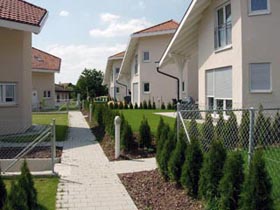- Start / Language
- HHO powered Powerplant
- HHO Systems in Cars
- Geothermal Energy
- Geotherm in Romania
- Partner and Links
- Sponsoring
Energy from the groundwater
Overview
In particular in areas, in which the ground-water level is close to the earth's surface, a use of the therein contained energy becomes interesting - just, because the temperature remains constant during the year.
Groundwater: hardly used heat pool
Crushed stone fillings in valleys reach sizes of up to 60m. In deeper areas they are groundwater-saturated. Pretty often groundwater can be achieved in such a way from 30 to 40m. Diese Täler sind grösstenteils mit gut durchlässigen Schottern verfüllt, in denen sich das von den Höhenlagen abfliessende Meteorwasser ansammelt und entlang der grossen Flusssysteme entwässert.
Those seasonally only little varying groundwater temperatures in the central country of Switzerland are between 10 and 12°C, and in the alpine valleys around 2°C lower. This constant heat pool is excellent usuable with heat pumps for the heating of buildings. It is to be noted however, that the groundwater is not gotten dirty by the plant and the natural seasonal groundwater temperature under consideration of all installed plants in this area raises not more than 3°C.
Principle of the utilization of groundwater heat
The groundwater in deeper depth is opened by a drilling and carried by a submerged pump to the heating system. Here an extraction of heat takes place with the help of a heat pump, whereby the necessary inlet temperatures of the heating system can be achieved.
 The
cooled-down groundwater is returned afterwards in the consequence over a
return-pipe into the groundwater body. Where the permeable crushed stones
begin already directly under the surface, the return can be realized
through a simple pit.
The
cooled-down groundwater is returned afterwards in the consequence over a
return-pipe into the groundwater body. Where the permeable crushed stones
begin already directly under the surface, the return can be realized
through a simple pit.
At the withdrawal- and return-place of the groundwater, it must be absolutely paid attention that the withdrawal place must be in the area of the in-current area and the return place must be in the out-current area. Otherwise a continuous cooling of the groundwater would take place.
.
.